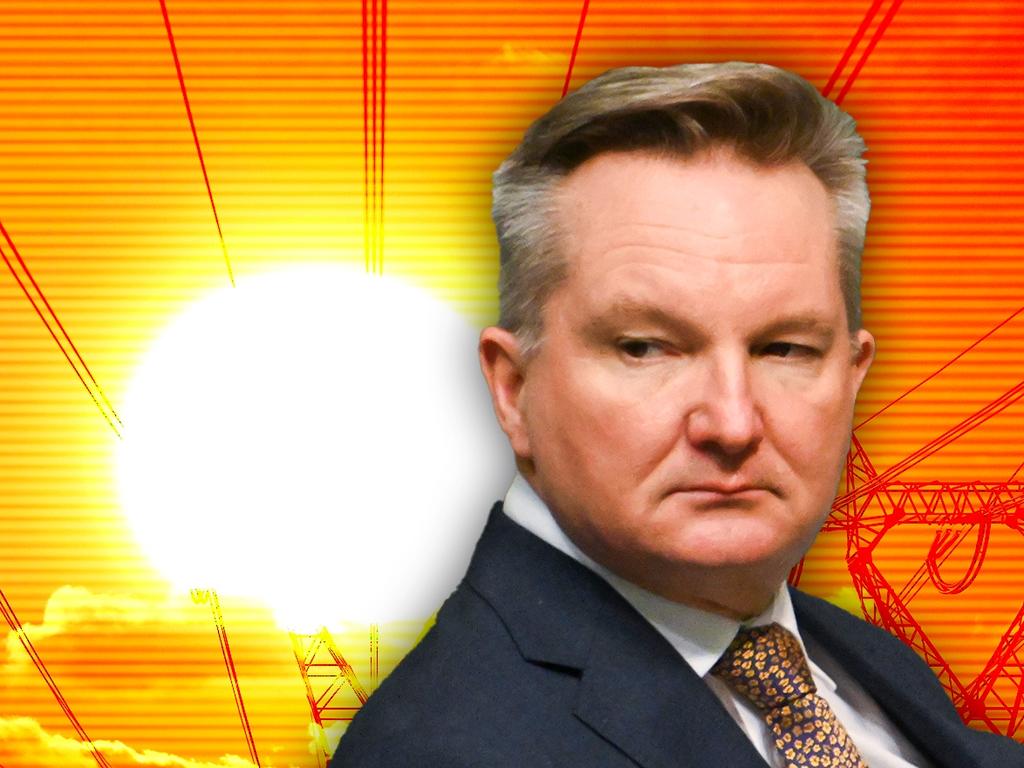Record number of Australians struggling to pay electricity bills
About 130,000 households are on hardship payment plans, highlighting the toll of Australia’s cost of living crisis that is sapping support for the Albanese government.
A record number of people are struggling to pay their energy bills, the Australian Energy Regulator has said in a report that highlights the toll of Australia’s cost of living crisis that is sapping support for the federal Labor government.
The AER said 1.9 per cent of customers are on hardship payment plans as of June 30, up from the 1.4 per cent record one year earlier.
The AER, however, noted the average cost of debt had shrunk 4.3 per cent and the result do not include the government’s $300 rebate dangled by the federal government which kicked in on July 1. The decline in debt levels coincides with a tempering of soaring inflation, though interest rates remain at a more 10-year high, straining many household budgets.
The AER said more than 130,000 households are on payment plans now, up from 95,634 last year.
The regulator also said those entering so-called hardship payment plans – offered by retailers to those unable to keep up on bills, are doing so with higher levels of debt. The AER said the debt for people on payment plans is $1476.
Worryingly, the AER said only 26 per cent of households on these electricity payment plans completed the scheme and no longer owed anything on their bills.
AER Board member Jarrod Ball said there are green shoots that the burden on households is decreasing.
“The increase in the number of customers in hardship programs shows that many are getting assistance and getting it earlier. However, there is evidence more customers may need assistance with payment difficulties and that hardship programs are not always effective,” Mr Ball said.
Despite the increase debt levels, disconnections fell to the lower level in five years. The AER said 0.23 per cent of households were disconnected. Market rules prevent households with children being disconnected even if they are unable to pay their bills, however.
Still, the figures will do little to quell public dissatisfaction. Labor insists the figures are the consequence of the global energy crunch, triggered by Russia’s invasion of Ukraine that sent prices of coal and gas soaring, and the former government’s inaction of bolstering new forms of electricity generation.
Federal Energy Minister Chris Bowen said the figures illustrate how hard many Australians were doing, but said blame lay with the former Morrison government.
“The former Coalition government’s decade of denial and delay left Australia exposed to a global fossil fuel crisis,” said Mr Bowen,
“Only the Albanese government has a plan to help Australians now and into the future. That’s why we are implementing energy rebates, which the opposition voted against, and are bringing of more of the cheapest form of energy – renewables – into the grid every single day.
“Last week the Clean Energy Regulator confirmed 7.5GW of renewable capacity will be connected to the grid this year – an all-time record for renewables.”

While Mr Bowen seized on the data on renewables as evidence that Labor’s plan to drastically increase zero emission sources will work, there are growing signs that the Coalition is cutting through with voters with its plan to use nuclear power.
Labor has set the target of having renewables generate 82 per cent of Australia’s electricity by 2030, while the Coalition said it will build seven nuclear power stations. With the first not ready until 2037, the Coalition is likely going to be forced to run coal for longer – though there is uncertainty about whether many ageing coal power stations can run into the next decade.
Increased numbers on payment plans will also weigh on the energy companies and add upward pressure on annual tariffs when they are reset next year.
Energy companies can not charge interest on the outstanding amounts and the debt levels weigh on their financial performance during the year. However, the cost of that debt is considered by the AER when it does its calculations on annual tariffs, known as the default market offer.
Any indication that annual tariffs on which all household bills are linked will be blow by the government and the Reserve Bank of Australia. Increases in electricity bills were a key driver in inflation, forcing the RBA to raise interest rates, and while the government’s rebate has lowered headline inflation figures – the central bank has said it will look through they temporary measures and will therefore not cut rates as the government is hoping for.




To join the conversation, please log in. Don't have an account? Register
Join the conversation, you are commenting as Logout